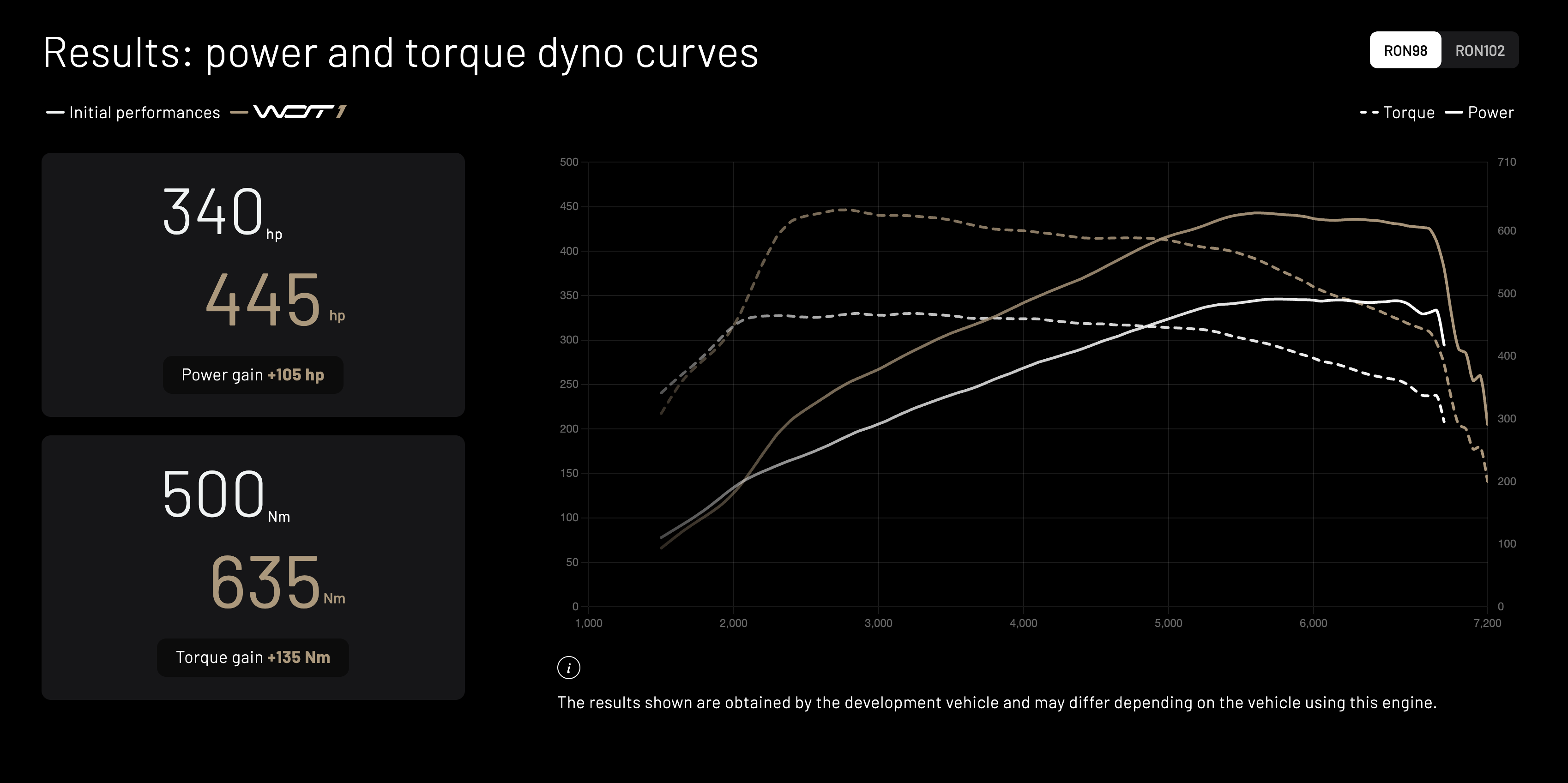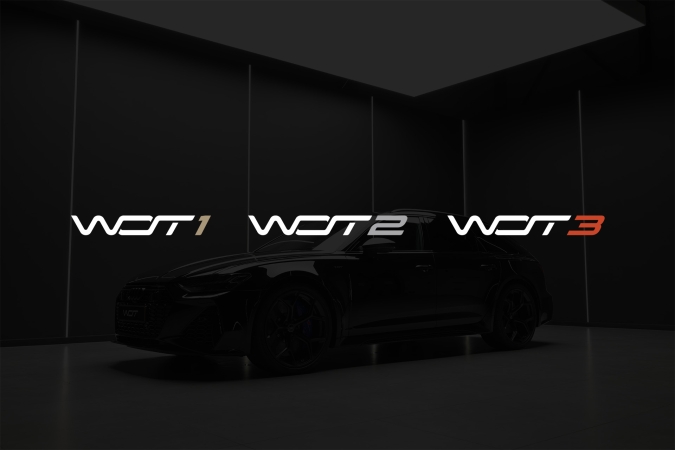

Interpretation
In the context of our developments, we use an approved dynamometer that provides crucial information about our engines. In particular, this measurement tool provides a graphical representation of two key aspects in the form of curves: torque, measured in Newton-meters, and power, expressed in horsepower.

As illustrated on the graph, the white curves reflect the original power and torque of the vehicle, while the golden curves represent the values after WOT1 reprogramming. The continuous curves indicate power, while torque is expressed in dashed lines.
Analogy for Better Understanding
To better understand these curves, let's take the example of a bicycle. Power can be compared to the speed at which you pedal, indicating how quickly you turn the pedals. In other words, the faster you pedal, the more power you generate.
On the other hand, torque represents the force applied to push the pedals. If you exert a great force to turn the pedals, you generate high torque. In this perspective, various scenarios can unfold. You have the option to pedal quickly while applying considerable force, or to do it slowly with less force.
Impact of Turbocharged Engines
Returning to the automotive world: before the advent of turbocharged engines, increasing power required an increase in engine displacement. This increase was generally linear and resulted in a common ratio of 100 Nm per liter.
The introduction of turbos revolutionized the game by allowing increased torque generation from the lowest RPMs, resulting in better responsiveness and therefore increased driving pleasure. Today, a turbocharged engine offers torque from low RPMs and power at high RPMs. Depending on the engine size and turbo selection, the curves can vary considerably.
It is equally essential to consider the shape of the curve. A smooth and well-filled curve will provide excellent performance at all RPMs. If we only focused on the numbers, it would also be possible to achieve the same performance on a torque or power peak over a short period; this would result in something fleeting and less enjoyable in daily use.
Beyond Performance
Although power and torque curves highlight a vehicle's power and torque, many factors we work on are not explained due to their difficulty in being measured. "Drivability," defining the vehicle's behavior in daily use, is one of these elements. It determines if a vehicle is enjoyable to drive. For example, if torque manifests abruptly at the slightest touch of the accelerator, although felt, it can be uncomfortable in daily use and potentially detrimental to the mechanics.
This is why, beyond the displayed performances, WOT operates in an OEM+ (Original Equipment Manufacturer plus) philosophy, seeking to offer the same experience as if the manufacturer installed a more powerful engine under the hood. We also invite you to read our article on this subject: https://www.wot.lu/en/news/la-qualite-wot-dans-un-esprit-oem.
In summary, power is associated with speed, while torque is linked to force. In the automotive context, these two concepts are essential to understand the engine's operation and evaluate its performance. An engine can be powerful if it runs quickly, and it can have high torque if it can provide great force. At WOT, our goal is to optimize efficiency and uniformity while respecting the parameters set by the manufacturer. To achieve this, we strive to reach maximum torque as quickly as possible and maximum power at an advanced stage, ensuring the widest possible range of use. This approach results in a vehicle that is both powerful and remarkably consistent.

